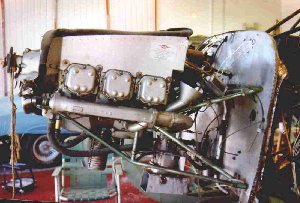
|
|
|
This page created 4/9/99 Updated 3/30/00 Click on images for larger photo. Notes on 220 HP Franklin 6A-350C1 installation in Stinsons by Rich Tweedie a. The engine mount is different, and wider than, the original. The earlier 1970’s mounts suffered a lot of cracks after years of service. Mine was carefully gone over, no cracks found, but magnafluxing found two invisible cracks. b. The engine mount brackets bolted to the engine are quite a bit longer than the originals, but it looks like the 165 brackets would bolt in place of the 220 brackets, and possibly the engine would fit on a 165 mount. The horsepower rating of the mount is not the issue, it must stand 6 G's weight. There is a rumor that PZL may furnish the 220 with the 165 brackets in the future, no guarantees. To my knowledge, no one has attempted to install a 220 on a 165 mount. c. Oil cooler installation is completely different than the 165, with a newer type cooler. The old one will not have enough capacity. There are four solutions so far on the oil cooler. First is to get by on the one certified by Seaplane Flying—may be OK in cold climates, but certainly marginal in the southwest USA. Second, install a tandem oil cooler behind the first one, done by Seaplane flying copying the installation used by the California Highway Patrol on their Maule Rockets. Third, install an 18 row oil cooler—requires modifying the cowling as it is inches deeper than will fit in the stock cowling. This one really cools the engine beautifully, but the installation is ugly. Fourth, mount the aux cooler on the back baffle, or duct from baffle to firewall mounting. I am wary of mounting the aux cooler on the baffle—it is liable to cracking the baffle, and lowers the plenum pressure to the cylinders. Seaplane Flying also moved the airflow divider in the air scoop to divert more air to the cooler, and less to the carb. d. The Baffles are different as well on the 220, and two vanes are installed in the top cowling to divert more airflow to the center cylinders. d. Most 220 Stinsons have the desirable options that are available on the 220, that is the vacuum pump, prop governor, and alternator. e. With a 10.5 to 1 compression ratio, these engines do NOT like to be run lean. Be careful of any possible intake manifold leak, and run them a little on the rich side for long life. I do have to lean mine for long taxi and holding, to prevent plug fouling, but this does not overheat them. f. Cylinders 3 and 4 generally run the hottest. g. Some (but by no means all!) of the high oil temp reputation has been caused by the temp probe mounted in the wrong spot. It is supposed to be measuring the INPUT side from the cooler. Mine had it mounted on the outlet side, which shows even hotter, and would go to the red line with ease. h. There is a new 8 lb, double reduction, permanent magnet, starter that is reported to be available during the Spring or Summer of 1999. i. Great engine! Smooth and reliable, no AD’s against the engine itself. It fits the Stinson and really makes a performer out of it. It will not outrun Bonanzas, but has excellent climb and takeoff characteristics. With the 220, I actually have longer range than with the 165, when pulled back to 125 MPH. Flying alongside 165’s on the same trips consistently showed significantly lower fuel burn. The photos below show the F220 installation before the restoration. 
220 Franklin
Notes, Part 2
|